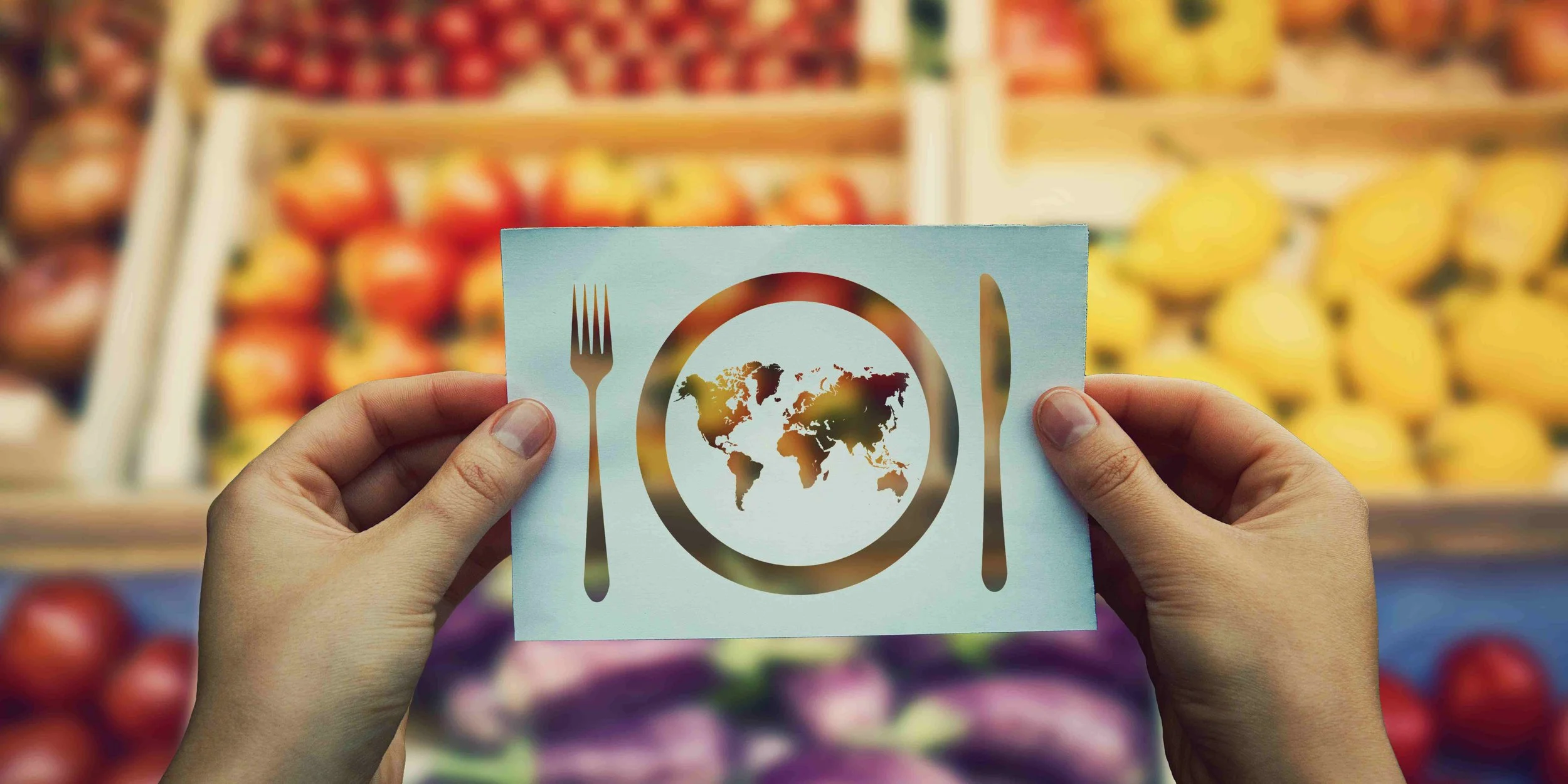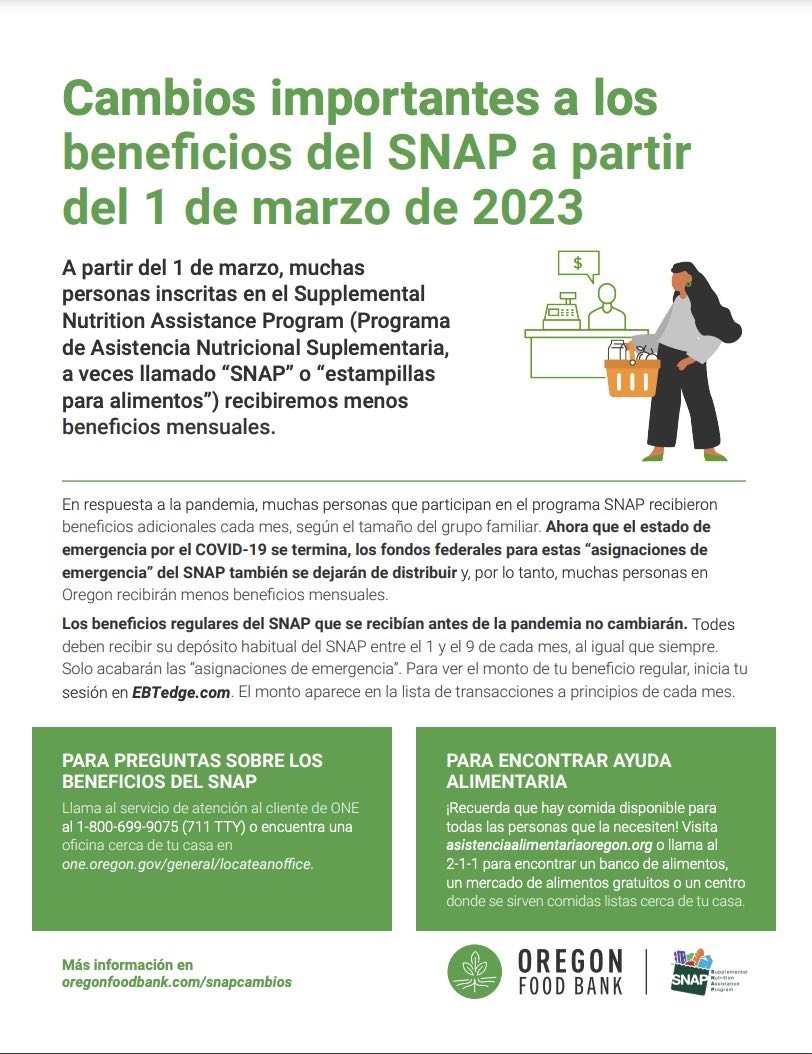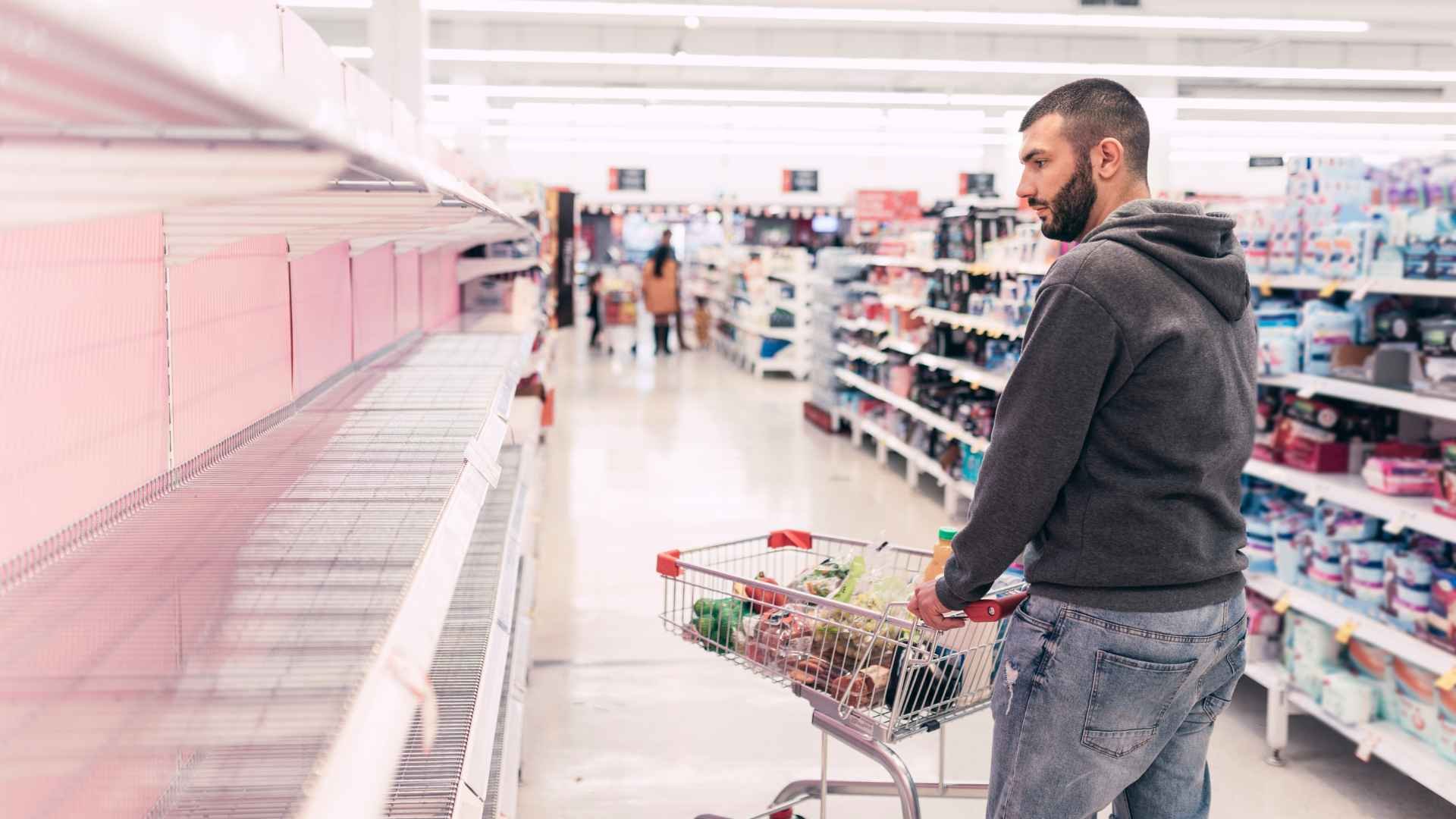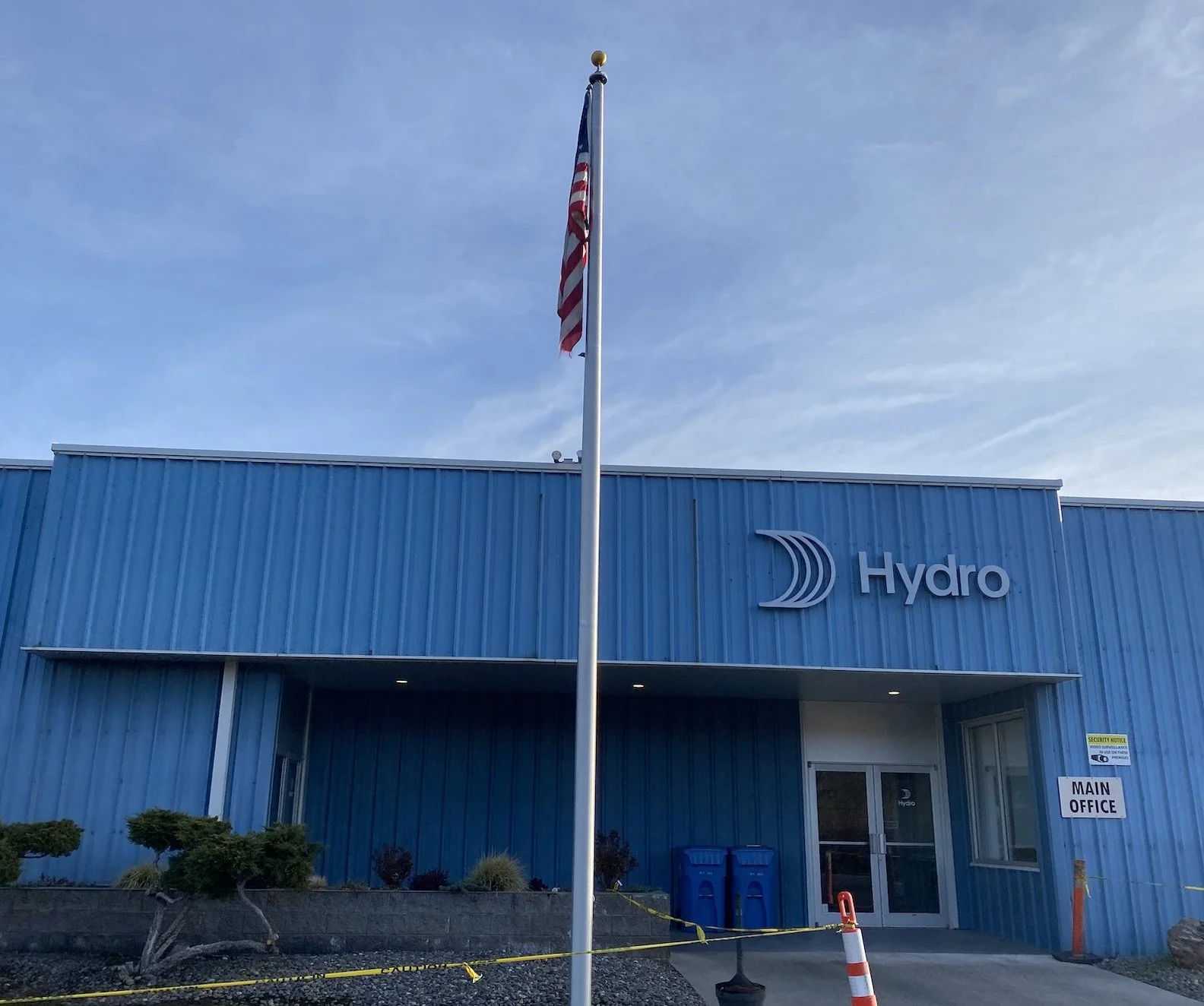SNAP Benefits Decrease to Occur March 1st; Experts Warn of Increase In Hunger and Food Shortages in 2023
By Cole Goodwin
February is the last month the federal government will issue emergency food allotments authorized by Congress to help low-income individuals and families through the COVID-19 pandemic. This means that in March 2023, all households who receive Supplemental Nutrition Assistance Program (SNAP) benefits will see a return to their normal amounts, without the additional allotments.
This will mean a 15% decrease in current SNAP benefits for households across the nation.
Emergency allotments are ending during the highest cost of living change in 40 years.
Recently, The Social Security Administration announced that there will be an 8.7% cost-of-living adjustment for 2023. Bringing an average Social Security benefit increase of $140 per month.
Fuel, housing, and food prices are on the rise. According to the US Bureau of Labor Statistics, food prices have increased by 13.5% from 2021-2022. And the USDA has said they expect costs to rise another 3.5-4.5% in 2023.
Oregon could see more significant decrease in benefits than the national average.
“The average household will see about a 40% decrease in their total food benefits between February and March,” said Jake Sunderland, Press Secretary for ODHS.
Currently 410,372 Oregon households (695,345 individual people) receive emergency allotments. In November of 2022 the average regular SNAP benefit in Oregon was $268 per household and the average emergency allotment was $179 per household.
The hardest to be hit?
Small towns and rural areas, which on average, have a 3% larger need compared to metropolitan areas.
Infographic from the FRAC.
“No community in America is immune to hunger, but rural and small town areas are especially hard hit,” said Jim Weill, president, FRAC.
Local agencies are doing their best to prepare.
Columbia Gorge Food Bank, which currently serves 5,000 families in the Gorge, said they are doing their best to prepare for the shift in policy.
Columbia Gorge Food Bank statement on 2023 SNAP Benefit Reduction:
“We are doing everything we can to ensure that our pantries are well stocked with fresh nutritious food and pantry staples. With inflation and supply challenges it means getting creative and seeking funding for food purchasing.
Columbia Gorge Food Bank is also working to help families stretch their SNAP dollars while supporting the local economy and farmers by sponsoring $12,000 in SNAP Match for fruit and veggie purchases at local farmers' markets.”
The food bank has seen a dramatic increase in need over the past few years and has been rapidly expanding in order to meet it by expanding community partnerships and renovating a new 11,000 sq ft. space which will serve as a hub for food access in the gorge.
Washington Gorge Action Programs, which lost its supplier of fresh foods back in December of 2022, along with several other rural food banks in Washington, is also doing its best to prepare for the shift in policy.
Washington Gorge Action Programs Responds to SNAP reduction:
"This is going to make things much more difficult for people who are already struggling to survive. Food prices continue to increase, and the lack of benefits will be really hard on families. I’m sure that this is going to force a lot of difficult decisions,” said Leslie Naramore, Executive Director of WAGAP.
"If clients are qualified for WAGAP benefits, then they qualify for SNAP. Most of our clients use SNAP benefits to supplement their food supply.
People in Klickitat and Skamania counties who are impacted can continue to access WAGAP food banks.
We're going to see an increase in need. To support food security, we encourage people not impacted to give donations and support local programs as much as possible,” said Naramore.
Local and World experts agree that it’s time to prepare for a rise in hunger.
According to the Food Research and Action Center, the pandemic disrupted a decade-long decline in food insecurity in 2020, but government policy has been a critical support in making that happen. The end of emergency allotments many experts fear a rise in food insecurity may return to households across the nation.
Hunger is a global problem with local impact.
The impacts of world wide issues such as climate change and war also impact our local reality.
The World Food Program along with many other organizations has projected food shortages in 2023 due to climate change, the War in Ukraine, and other international conflicts.
“When a country like Ukraine, that grows enough food for 400 million people is out of the market, it creates market volatility, which we are now seeing” said David Beasley, World Food Program Director during his address to United Nations.
In addition, according to the USDA, Russia’s invasion of Ukraine has prompted a global fertilizer crisis which has dramatically affected crop production.
“With a food availability problem, all this could culminate into the beginning of a global depression by the end of year,” said Beasley.
The items most likely to see shortages or high cost increases in 2023 include: butter, baby formula, beef, campagne, eggs, corn, sunflower and palm oil, corn, wheat and bread products, canned drinks, oranges, and lettuce.
"With regard to food shortage, yes we did talk about food shortages, and it's gonna be real," U.S. President Joe Biden during a (National Atlantic Treaty Association (NATO) summit last year.
Due to globally intertwined markets, the local market also feels the impact of these global issues.
“People in Oregon are currently experiencing historic levels of need and more people than ever before are applying for state benefit programs. SNAP enrollment has increased by nearly 12% since the beginning of the COVID-19 pandemic,” said Sunderland.
“We know that without these emergency food benefits some in Oregon may experience hardship and hunger,” said Fariborz Paksereshtk, ODHS Director.
“We know that many rely on these additional emergency food benefits and that without them some people might experience hardship and hunger. We encourage people who are concerned about this change to start planning for this change today. Having a plan ahead of time will reduce the chance of experiencing an emergency or crisis later,” said Sunderland.
How to prepare for a reduction in SNAP Benefits:
Prepare today by:
“Knowing what your regular SNAP benefit is. This can help you budget and plan. You can check this by accessing your EBT account online. Your regular SNAP benefits are added to your EBT card between the first and the ninth day of the month. Find out what additional food resources there are in your community to help you get enough food. You can do this by dialing 211, or by visiting NeedFood.Oregon.Gov,” said Sunderland.
How To Check Your SNAP and EBT Benefits in Oregon
SNAP users can check what their regular benefits are by accessing their EBT account online at www.ebtEDGE.com or by logging into their ONE account at Benefits.oregon.gov. Questions about SNAP benefits can also be directed to the ONE Customer Service Center at 1-800-699-9075.
Oregonians can report changes to their income or household in various ways, such as online at Benefits.oregon.gov, by mail, fax, or phone.
Additionally, Oregonians can find out more about food supports in their area by:
Contacting their local ODHS office
Contacting their local Community Action Agency
Dialing 2-1-1 or texting their zip code to 898-211, or visiting www.211info.org
The Oregon Department of Human Services COVID-19 help center is also a useful resource.
Hood River ODHS is located at 1610 9th Ct, Hood River, OR 97031 541-386-3199
The Dalles ODHS is located at 700 Union St # 128, The Dalles, OR 97058 541-296-4661
How To Check Your SNAP Benefits in Washington
Learn what your new benefit amount will be by calling 877-501-2233 and choosing the self-service option or log into your Client Benefit Account at WashingtonConnection.org.
Find local resources by visiting findhelp.org or 211.org
Report a change
If circumstances in your life have changed, you may qualify for a higher benefit amount. Call 877-501-2233, go to WashingtonConnection.org, or visit your local Community Services Office to report changes in household size, income or expenses.
12 Ways to Prepare For Potential Food Shortages
1.) Don’t panic buy!
Buy two of what you need and build a stock of shelf stable food for you, your pets, poultry, and livestock over time. This will ensure other people in your community also have a chance to access the items they need and will also prevent you from going into debt.
2.) Grow a garden.
Learning how to grow food outdoors or indoors is a great way to ensure that you have access to certain food even if you can’t get it at the grocery store. Need gardening help? If the internet just can’t provide you with what you need Local Master gardener’s, your local Oregon State University Extension Office and local library can be great resources. Local libraries are also sometimes the site of local seed banks!
3.) Learn to keep chickens, bees, or livestock.
Learning how to care for egg, meat, dairy, and honey producing creatures can help you to maintain access to those food sources in hard times.
4.) Plant fruit and nut trees.
While fruit and nut trees take a while to produce-once established they can be an invaluable resource.
5.) Cut back on food waste.
Eat those leftovers, avoid throwing out edible food, and start a compost pile to create fertilizer for your garden.
6.) Learn how to regrow vegetables from waste scraps.
You can also learn to grow most kinds of root vegetables such as ginger, turmeric, horseradish, potatoes, garlic, turnips, and onions from organic produce you get in the store.
7.) Buy food that is grown locally.
Encouraging your local farmers to continue producing food for your community to help to create a more sustainable food industry and insulate yourself and your community from the impacts of food shortages caused by international conflicts.
8.) Learn how to preserve foods.
Learn canning, jamming, tonic making, and more as a way to create large amounts of shelf stable food from your garden.
9.) Learn how to hunt, fish, and forage wild edibles.
Our wild lands are more stressed than ever due to climate change, pollution, and loss of habitat. So, you’ll need to learn how to sustainably harvest local foods such as salmon, deer, mushrooms, berries, and nuts before you start going out there and disrupting the ecosystem-but once you learn to identify local foods in your area-you'll be surprised by the amount of food that is available.
10.) Learn how to cook from scratch.
The more you know how to cook from scratch-the less you’ll have to pay in food preparation costs to other people.
11.) Learn to save, store, and germinate seeds.
Inside most fruits and vegetables are seeds that contain the power to grow new food. So instead of throwing out the seeds you’ve scooped from your bell peppers-collect them and learn how to grow them. Now you’ve got ten pepper plants for the price of one!
12.) Buy whole grains and beans in bulk and learn how to safely keep grains in long term storage.
Grain can be a great shelf-stable food, whether it’s rice, wheat, quinoa, or some other food. Now is a great time to start buying the big bags. Just be sure you do some research on how to keep them shelf-stable.
Support Local News
We are funded by readers like you.














